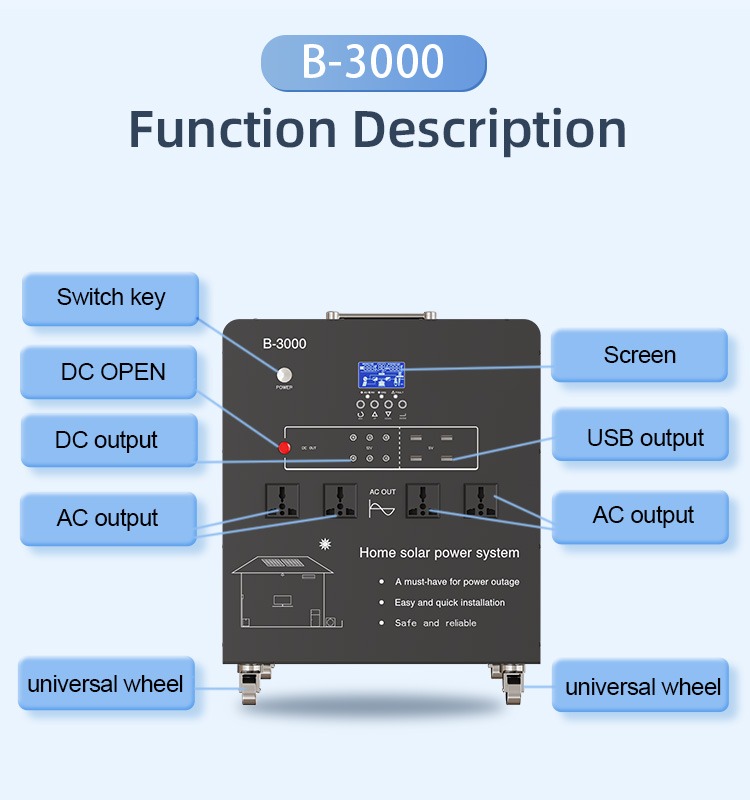Using Portable Power Stations as UPS: Key Features and Benefits
4/1/20254 min read


Understanding Portable Power Stations
Portable power stations have emerged as versatile solutions for a range of power needs, providing convenience and reliability in various contexts. At their core, these devices are compact battery systems designed to store electrical energy for later use. They typically consist of a high-capacity lithium-ion or lead-acid battery, power outlets, and essential features such as USB ports and DC outputs, making them a multifunctional option for users.
The operation of portable power stations is relatively straightforward; they are charged via a standard wall outlet, solar panels, or car chargers, enabling users to harness energy in diverse environments. Once charged, these stations can supply power to numerous devices, ranging from small electronics like smartphones and laptops to larger appliances such as mini-fridges or medical equipment. This adaptability makes them invaluable for outdoor enthusiasts, campers, remote workers, and even households seeking a backup power solution.
The growing popularity of portable power stations can be attributed to advancements in technology. Many units now incorporate high-efficiency inverter technology, converting stored DC power to AC power, thus enhancing usability across various devices. Additionally, battery capacity plays a crucial role in determining the operational time and the number of devices that can be powered simultaneously. For instance, the higher the watt-hour rating of a portable power station, the longer it can supply energy to its connected appliances.
Furthermore, the lightweight and compact design of these power stations has made them an attractive alternative to traditional, heavier generators, particularly for those who prioritize portability. As users seek reliable energy solutions for both recreational and emergency situations, portable power stations stand out as an effective and eco-friendly option. Their ability to seamlessly integrate into daily life while providing power in unpredictable scenarios solidifies their position in today's energy landscape.
Stable Power Output and Its Importance
Stable power output is a crucial factor when utilizing portable power stations, particularly for sensitive electronic devices and critical equipment. Fluctuations in power supply can lead to significant performance issues and even irreversible damage to electronics. Devices such as computers, medical equipment, and home entertainment systems rely on a consistent power input to function effectively. Therefore, ensuring a stable power output from a portable power station is essential for maintaining the integrity and longevity of these devices.
Power instability typically arises from overloaded circuits, voltage spikes, or insufficient power supply capacity. These conditions can lead to surges that may harm connected appliances and systems. By employing a portable power station, users can circumvent many of these potential hazards. Quality portable power stations are designed to deliver a reliable and consistent voltage output, thereby safeguarding devices from erratic power supply scenarios. This reliability serves as a significant advantage, especially during power outages or in off-grid locations where electricity may be sporadic.
Moreover, the importance of stable power output extends beyond mere device protection. It ensures that essential operations can continue without interruptions. For instance, in a professional setting, fluctuations in power supply can disrupt workflows, leading to loss of productivity and potential data loss. Portable power stations offer a dependable alternative to grid power, enabling users to maintain necessary operations in any environment. Additionally, they often include built-in features such as surge protection and voltage regulation, which further enhance their capability to provide stable power output.
In summary, the ability of portable power stations to deliver stable power output is a vital aspect that users should consider. It not only prevents damage to sensitive electronics but also ensures uninterrupted service for equipment, highlighting their role as a reliable power solution in various applications.
Voltage Stabilization Features
One of the notable features of portable power stations is their voltage stabilization capability. This function is critical for ensuring that sensitive electronic devices receive a consistent and reliable power supply. At the core of this feature is the voltage stabilization circuit, which actively regulates the output voltage to stay within specified limits, even when there are fluctuations in battery power or changes in the load being served.
In many portable power stations, voltage stabilization circuits are designed to maintain an output voltage of around 220V±5%. This tolerance is particularly important for devices that are sensitive to voltage variations, such as laptops, medical equipment, and certain home appliances. If the voltage deviates too far from this range, it can lead to malfunction or permanent damage to these devices.
The stabilization process typically employs advanced components such as voltage regulators and inverters. These technologies work by constantly monitoring the output voltage and making real-time adjustments to maintain stability. For instance, if the load increases suddenly—such as when a refrigerator kicks on—the circuit compensates by adjusting the energy output accordingly. Conversely, if the load decreases, the circuit ensures that excess power does not cause voltage spikes, providing a steady power supply.
In practical applications, the benefits of voltage stabilization features extend beyond just protecting equipment. For everyday users, having a power station that can reliably maintain the necessary voltage means uninterrupted usage of devices during a power outage or while camping. For critical applications, such as in hospitals or industrial setups, the ability to stabilize voltage can be a matter of operational efficiency and safety. Thus, the investment in a portable power station with robust voltage stabilization features contributes significantly to both convenience and peace of mind.
Frequency Stabilization: Ensuring Compatibility
Frequency stabilization plays a crucial role in the functionality of portable power stations, particularly when they are used as uninterruptible power supplies (UPS). This feature is designed to ensure that the electrical output of the power station aligns with standard mains frequencies, which are either 50Hz or 60Hz, depending on the region. Maintaining the correct frequency is essential for the normal operation of frequency-sensitive equipment, including medical devices, computers, and various home electronics.
Many electronic devices are designed to operate optimally within specific frequency ranges. When these devices receive power at incorrect frequencies, it can lead to malfunctions or, in some cases, damage. For example, medical apparatus that relies on consistent and stable power supply may fail to operate properly if there are fluctuations in the frequency. Therefore, a portable power station with robust frequency stabilization becomes indispensable in ensuring the reliable performance of such sensitive equipment.
In various scenarios, frequency stabilization is especially critical. During power outages or in emergency situations, it is necessary for portable power stations to provide a stable frequency output to maintain the functionality of essential devices. This capability not only enhances the overall reliability of power stations used as UPS systems but can also be a determining factor in their effectiveness. Homeowners and professionals alike invest in power solutions with frequency stabilization features to safeguard their valuable and crucial electronic assets.
Ultimately, the integration of frequency stabilization in portable power stations provides users with peace of mind. By assuring that devices receive consistent electrical input, this feature significantly enhances the reliability of portable power stations as uninterruptible power supplies, ensuring that users can depend on their devices during critical times.
